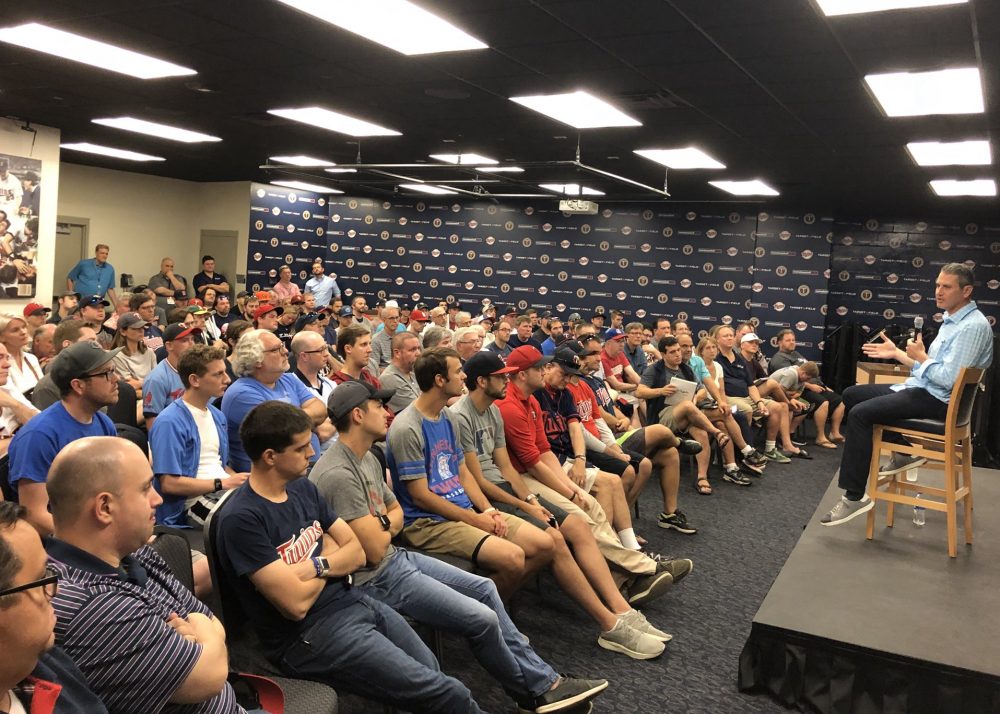
As part of Baseball Prospectus Night at Target Field on August 25, Twins general manager Thad Levine joined us for an interview with BP editor-in-chief Aaron Gleeman, followed by audience Q&A. The following is a transcript of the interview portion, which has been edited for clarity and brevity, as the entire session lasted more than an hour and was over 15,000 words when transcribed. You can listen to the unedited, hour-plus Levine audio, including the audience Q&A, on the Gleeman and The Geek podcast.
***
Aaron Gleeman: Obviously it’s been a frustrating, disappointing year. What are some of the sticking points that you’ll look back on and say were the forks in the road, where it went in the wrong direction? Or do you look at it as this year was never going to happen anyway, that you might have needed to win 97 games to make the playoffs, and clearly, with everything going as wrong as it did, that wasn’t going to happen? Or is that self-defeating to look at it that way?
Thad Levine: I actually think it’s a blend of the two. First of all, what we try to avoid in the front office is anything that is characterized as “loser talk.” We try not to say beforehand in a season, “Hey, listen, we don’t have any chance of winning, so let’s plan for losing.” That being said, we’ve gotten very sophisticated in terms of prognosticating what a certain roster should be able to do over the course of a season, what that team’s depth should allow them to do as the season progresses, and from that, you derive playoff percentages, playoff odds, win projections for teams. We walked into the season with the feeling that between Houston, New York, Boston, Cleveland, we have four teams that are somewhere between extremely good and just bona fide behemoths in the American League. Our strategy this past offseason was to invest in the 2018 version of the Twins and not do anything at the expense of 2019 and beyond. We ended up, as an impact, signing a number of players who had one-year deals, effectively.
I think it’s imperative that whether things are going well or they’re not going well, we absolutely have to evaluate what’s going on, to find out what is sticky from this, and what are things that we can derive from this. One thing that I look myself in the mirror on and say that I’m very responsible for one of the downfalls in the season is putting too many guys into one clubhouse that had expiring contracts. You aspire to have chemistry in the clubhouse, everyone talks about this. It’s kind of this ethereal thing that is elevated. Candidly, I don’t know that what comes first is winning or chemistry, but I’ve not been around many teams that win every day and everyone hates each other, nor have I been around a lot of teams where everyone just loves one another and they lose all the time but couldn’t be a happier lot. I do think there’s some balance there, but one thing I can say, a year later, is when you have a lot of guys whose contracts are expiring, some of whom were casualties of a very unique free agent market this past offseason—Lance Lynn ended up having a much smaller market than expected, and Logan Morrison, the same—you bring those guys in, great guys in their own rights, but they had a negative experience in the free agent market.
Now they’re here for one year, with the chance of going back onto that free agent market a year later, and I think you’re creating more of a clubhouse of mercenaries who are just trying to survive and rectify their own careers, rather than a group of men coming together with one galvanized goal of trying to win a championship. I think that’s a sticky element that we’ll go into this offseason having learned. Now, I don’t think you swing the pendulum all the other way and say that the next free agent we approach, come hell or high water, we’ll give him a three-year deal so he can feel secure, but I think there’s a blend of what we need to achieve in the offseason, relative to bringing in people who have a vision of being here more than one season and have more of a vested interest in the ultimate outcome of this team’s development, balanced out with some of the shorter-term guys. I think that was magnified with the fact that our two developed leaders on our team, Joe Mauer and Brian Dozier, were also slated to be free agents. Our great anchors of our team were also entering that same phase, and as great leaders as they are, they’re also human beings. Sometimes we lose sight of that because these guys are so superhuman in what they do in between the lines. It’s challenging, when security starts ebbing, to give 100 percent to a team and the development of that team, half a year in which you’re going to be there.
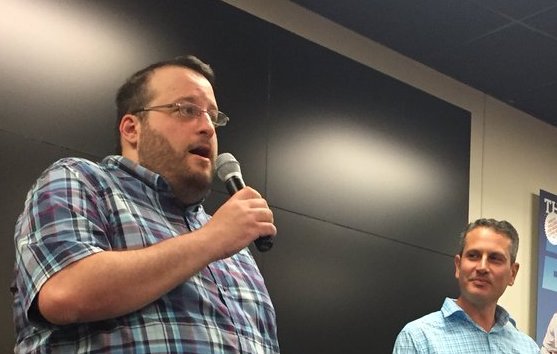
Gleeman: The payroll slate is relatively clean, or at least as clean as it’s been for the Twins in a long time. We crunched the numbers, and with arbitration and stuff, there’s around $60-something million lined up. How do you find a middle ground? If a one-year deal presents itself for a pitcher you like, you’re obviously going to snatch them up, but how do you go into the offseason with a ton of money and a ton of roster flexibility? Is the plan to shoot higher, whether it’s with trades or free agency, or is there a specific plan?
Levine: We aspired to clear the decks for 2019 and beyond because 2019’s offseason free agent class is supposed to be one of the best ones in the last decade. We saw the ability to supplement our core of young players—Buxton, Sano, Kepler, Rosario, Berrios—that grouping of guys. We felt like if we added the right free agents to that group, if Cleveland started graduating its next rung of guys, then we started seeing a vision where the gap between the Indians and the Twins would start to narrow. I’d say we still have some confidence in that, with one qualifier. One of our biggest offseason pursuits is figuring out what we have in Miguel Sano and Byron Buxton. Before the season started, I would’ve said that we have a ton of payroll flexibility and some really attractive free agents out there. Whether or not they’d actually want to come here would be yet to be determined, but we were going to pursue the hell out of them. As we sit here today, it’s not to say we’re not going to get aggressive in this free agent market, but we may actually shift our attention to the trade market. This might not be the perfect time for us to invest in a guy who’s 30 years old and would need to perform today in order for us to realize his true potential. We’re bullish on 2019 for the Twins, and we’re really excited for 2020 and beyond, for a variety of reasons.
We like our young players now. I think that with what Sean Johnson and our amateur scouting group has done in the last two drafts, and what our pro scouting and analytics groups were able to help us do at the trading deadline, we’ve really flushed our system with some really exciting players, some of whom are on the horizon and will be here within the next 2-3 years. Because of this, we’re really trying to pay attention to whether the wave is today, with that group of men I talked about earlier, or if it’s a blend of those guys and the next wave, or if it’s the next wave. We’re going to probably be aggressive in this offseason accordingly, but needless to say, four months of information later, we’re probably in a little different position than we thought we’d be. I think there are realities and there are excuses. We’ve all become enamored with the WAR calculation, and effectively it tells you what your defensive and offensive contributions are, translated into Wins Above Replacement. Going into the season, a lot of publicly held websites predict who are going to be the best players in the game. A lot of those sites predicted that the Twins would have three players in the top 50 of the major leagues, which is a pretty significant achievement. Those three players were Buxton, Sano, and Dozier. What those guys ultimately ended up delivering for us, relative to what their projections were, was nine percent of the possible outcome. I could tell you, with as sophisticated as we’ve gotten, in terms of predicting players’ performance, we never for one instant contemplated them delivering 9 percent of their possible outcome.
Layer on top of that Ervin Santana missing the first 100 games and Jorge Polanco missing the first 80 games. Those were just things that we hadn’t really contemplated, so that led us to a path, which you touched on earlier. When you look at those big boy teams, were we okay with taking a step back? We walked into the trade deadline with a little more of an eye toward if someone knocks on our door, we’re going to answer it. It just so happened that we had some players that were really well-regarded in the industry. We regarded them well, too. In practice, we traded six major-league players, only one of whom we would have controlled past this year in Ryan Pressly, and we would have controlled him for one more year; we just felt it was the right time to get aggressive. I think our feeling is that if you’re not trying to help this year’s team or trying to invest in next-year-and-beyond’s team, you’re standing still and someone’s going to beat you. We’re very respectful of the fact that Cleveland is ahead of us, Chicago, Detroit, and Kansas City are aggressively trying to catch us. If we stand still, we’re doing you guys a disservice, and we’re doing our players a disservice because we’re going to wake up tomorrow and realize the three teams behind us just narrowed the gap and we did nothing to gain ground on them or on the team ahead of us. We did something that I think we knew would be unpopular in our clubhouse and probably among fans as well, but we tried to get aggressive against those ends and not have any half-measures.
Gleeman: You mentioned the clubhouse aspect. Dozier, last year and this year, went public with comments at the trade deadline, and then this year, Santana also said some stuff. What is your non-emotional reaction to that, once you have a moment to think about it? Like you mentioned, Dozier was a huge clubhouse leader, and I’m sure Santana was, to some extent as well, but Santana missed 100 games and Dozier under-performed. Do you feel like you were more frustrated by those comments, in part because they had contributed to the team under-performing, or do you try to separate that out and try to just view that as it was?
Levine: I don’t know if you guys have this experience, but every holiday, my wife sends me a list of all the people we’re sending holiday cards to and says, “Do we need to send this to all these people?” Well, I just cut Brian and Ervin off the holiday card list, and I feel like we all win from that circumstance. [Audience laughs.] I personally don’t take any of that stuff to heart; I feel like these guys have a job to do every day. It’s two-fold, really; they’re trying to win that night’s game, and as leaders of this team, they’re trying to elevate the play of the players in that clubhouse and motivate them in a way that puts them in a better position to help us win that night’s game. I give them a lot of latitude to say whatever they feel like they need to say in those moments. I’m not deluded to think that any of those players are going to say, “Hey, I think they did the absolute right thing there. They’re peeling back some of our best players in the name of winning in the future.” Especially in light of the fact that Dozier was going to be a free agent, and Santana as well.
Getting back to the humanity side of things, they see their mortality; they don’t know how many more years they’re going to ultimately get a chance to play or how many times they’re going to be able to contend for the playoffs. They don’t want to throw in the towel. I want those guys to have that attitude, personally. I will say, the flip side of that, those two guys notwithstanding, objectively I think we aren’t going to achieve the greatness that we all collectively want in our team until someone takes accountability for how we’re performing and says, “Hey, listen. This is a little bit on us. It’s a little bit on them upstairs, but it’s also a little bit on all of us.” I think the day we’re all a little bit more accountable for our actions and our performance, I think that’s when we’ll have achieved something, because that’s when we’ll have true leadership in our clubhouse. I think that’s something we’ve got to work towards. I view it more in the light of, okay, this is something we’re going to need to try to progress towards if we want to what we all want to achieve here. Absent of that, I think we’re missing a little something.
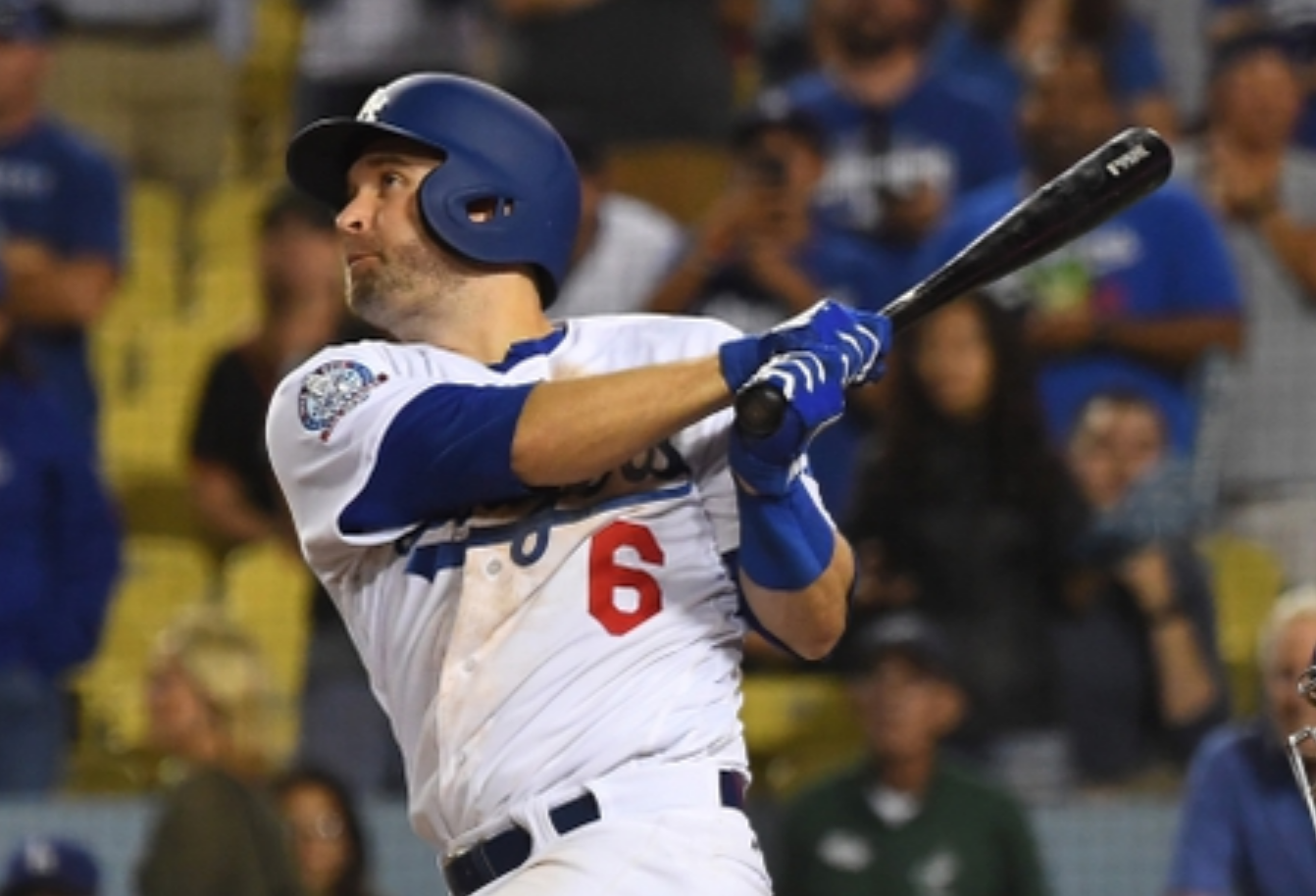
Gleeman: You mentioned how important Buxton and Sano are. Let’s get back to that, because that’s probably the question I get the most, which is, what’s going on? [Note: This interview took place before the Twins announced that Buxton would not be called up in September.] What should the perception of those two guys be—not only where they’re at now, but their place on the team, their importance to the team? With Sano, that might be what position he’s going play. With Buxton, it might whether we should adjust our expectations for him offensively, more in line with what he’s shown, versus what we had hoped. What should the expectation be for both of them, or individually, going forward?
Levine: If I sat before you and had perfect answers, I think we’d be in a very fortuitous position, but the reality is there are more questions surrounding those two players than we ever could’ve anticipated entering the season, especially in light of the momentum that those two players had when entering the offseason. Sano’s first half of last year was tremendous; I think we all felt that the player that this franchise signed out of the Dominican Republic and invested in heavily, who was on all these posters, had finally come into his own. Buxton was kind of the converse; he was the guy who got off to a sluggish start, was playing exceptional defense throughout the year, and then finished the season on such an offensive high that we were all so optimistic.
I think there are some guys in our R&D department in the back of the room who can probably answer this a little bit better than I can, but just in broad strokes, I think you should try to generate somewhere between 55 and 60 units of Wins Above Replacement if you aspire to play in the playoffs. To do so, clearly with 25 men, you need to have a few guys capable of delivering about 3-5 Wins Above Replacement, which is a relatively elite player. These are two guys that had the skill set to do just that. We don’t have an unlimited number of players who are that dynamic on both sides of the ball. One thing that I’d say about Miguel, and I hope you guys have seen it, is the offense hasn’t been great since he’s come back. The strikeout rate has reduced some. His body does look a lot better; he did lose a meaningful amount of weight, so it’s not just how he looks or that he’s just wearing a different type of jersey; he’s actually lost some weight. But his defense has been, in my opinion, really good, which is really encouraging. If this guy can stay athletic enough to stay at third base, his ability to help us at both sides of the ball is significant.
To get back to the WAR concept, we see those two guys as being as capable as anybody on our roster at elevating us and delivering 4-5 wins in a given year. We don’t have a ton of those guys, so if these guys are capable of doing that, we’re in a really good spot in 2019. If those guys falter, we may be looking a little bit at, as I said earlier, blending this wave with the next wave, if we’re going to try to achieve something great. We have a lot of attention that we’ve already paid toward what we’re planning on doing with these guys this offseason, but I can tell you unequivocally, we’re not going to pursue any free agent as hard as we’re going to dedicate our time to trying to put these guys in the absolute best position for walking into spring training prepared to succeed.
Gleeman: What was the thought process that you went through about not just sending Sano to Rochester for three weeks, but sending him to Fort Myers, kind of building him up from ground floor? How long of a process was that, and what was the involvement, in terms of getting him on board? Because I was, I don’t want to say surprised, but it was good to see, not only at the time, but once he returned, he seemed on board. He was saying all the right things, and he seemed to be along with the notion that they did this to help me, which certainly could’ve broken bad, not just with Sano, but anyone put into that situation. What was the path taken to not only make that decision, but to get the player, and I’m assuming his agent and family members, on board?
Levine: It’s a great question. I think this probably applies to every walk of life, but sometimes our intentions are really sound and our execution falls a tick short of our intentions. In this case, we tried to measure three times before we cut once. We had lots of Sano summits in advance of the conversation, ultimately with Miguel and his agent. We included in those conversations our head trainer, our strength and conditioning coach, our infield coach, our hitting coaches, our mental skills coach, and we really tried to include anyone who had been around him when he had seen success. What did that look like? How could we present it to him, both via video, verbally, or otherwise? We were extremely thoughtful about that. The ultimate reason why we sent him to Fort Myers other than Rochester or another affiliate really came down to the fact that his rehabilitation required two things: getting in better shape and getting an offensive redo.
We felt it was imperative that he got into shape first. Part of the reason that we made the decision to send him down was, as you guys know, he wasn’t statistically performing quite up to the level that any of us expected and we started hearing commentary around what he could do to prepare for games and his level of physical fitness and exhaustion. At that point, we realized we just were not putting him into the position to succeed at the major-league level. What was first imperative was rebuilding a foundation for success for him, and that was on the physical side. We would’ve sent him to Triple-A, were it not for the fact that the Fort Myers facilities, in terms of working out, are head and shoulders ahead of any of our other affiliations. No disrespect to what’s going on at Chattanooga and Rochester, but it’s just that we have the best coaches down there, when it comes to strength and conditioning, we have the best facilities, and since we knew that was such a huge part of the foundation for him, we didn’t want to sell him short by just putting him in the place where maybe his pride wouldn’t weather such a big knock.
We wanted to get him right, and so he bought into that, which I give him a ton of credit for. His agent was such a partner with us throughout this process; his name is Kyle Thousand, which you can’t make up those names for an agent. I give them a ton of credit, because without their buy-in, we couldn’t just unilaterally send a player there; we need to get his buy-in. And he took care of himself once he got there. We started out with playing him every other day. Ian Kadish and Dave Rak, who are two of our highest-level strength and conditioning coaches, were down there, dedicated to working with him full time. Sam Perlozzo, he’s been a major-league manager, longtime coach, our infield instructor, he dedicated himself to Miguel. Fred Guerrero, the guy who signed him out of the Dominican Republic, who had recently moved to just outside of Fort Myers, was there every day. All of those men really banded around Miguel. I think Miguel deserves credit for doing the work, and those guys put him in a position to succeed.
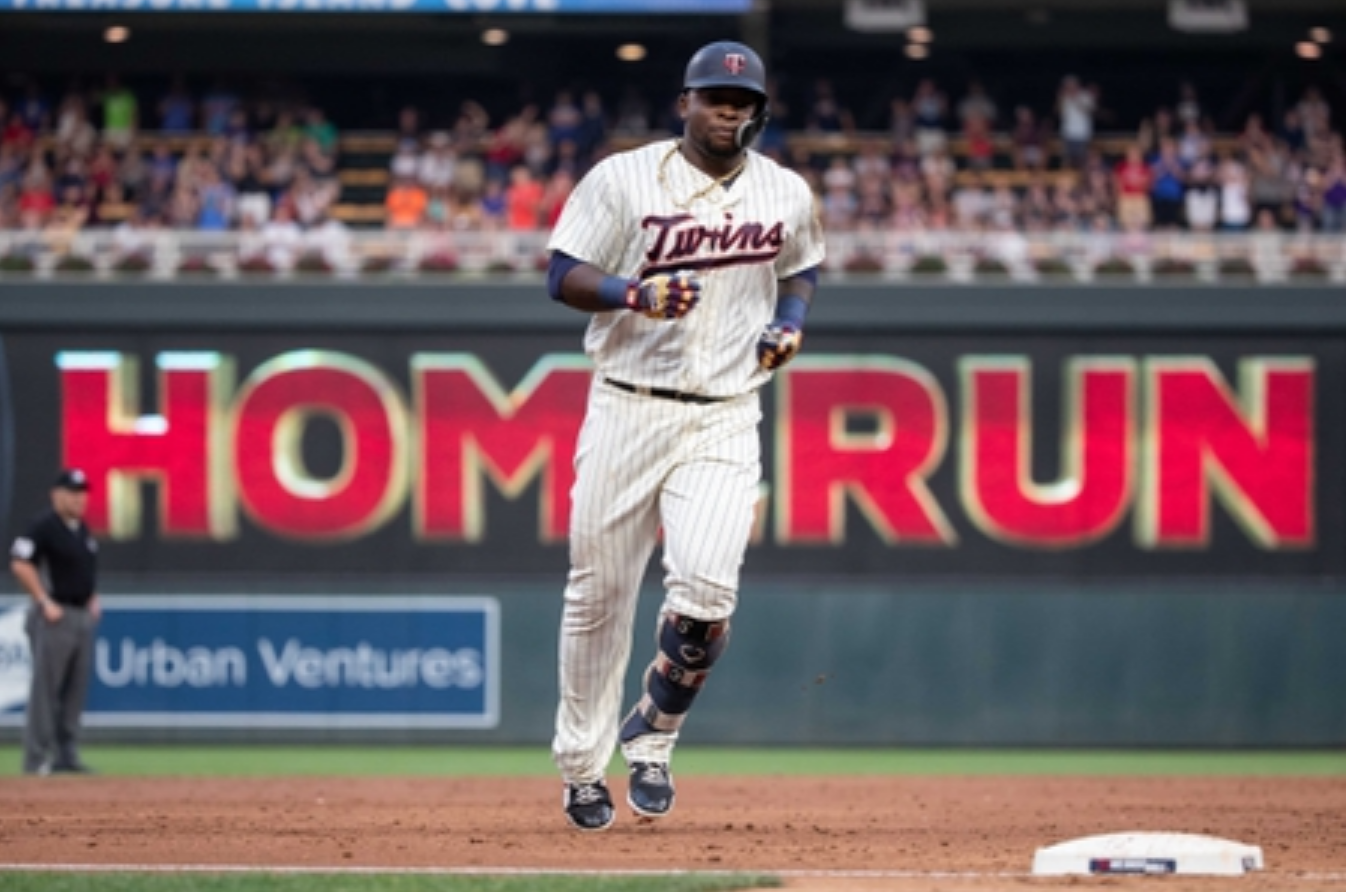
Gleeman: You talked a little bit about the R&D department, the analytics department. At this event last year, we talked about how for the first time in Twins history, the R&D department was heavily incorporated into the draft planning and draft board. Now, a year later, you guys have expanded that department significantly. We’ve had [director of baseball operations] Daniel Adler as a podcast guest, and [baseball operations developer] Hans [Van Slooten] is sitting back there. I think he’s been on the podcast before. Sorry to out you. In terms of head count in that department, it’s significantly higher, obviously, but where is it at a year later? Has it reached where you wanted it to be?
Levine: Two of the men in the back of the room represent a huge change for us; I think in the last year and a half, these two guys have joined us. [Former BP staffer] Ezra Wise and Hans, if you guys can wave to the group. Hans has a goatee and Ezra doesn’t. Hans comes to us from Baseball Reference. Ezra has got unique expertise on at least two fronts, he’s an expert in evaluating catching and pitching. Both of these guys represent significant steps in the right direction for us. Two years ago, I don’t know this franchise would’ve had the vision or the weight to attract people of this quality to our organization, just because we were a little bit behind the rest of the league, relative to our investments in analytics.
But now these guys represent two of maybe eight people who are committed full time to evaluating players on very unique elements. Ezra was central to almost all of our trade discussions this year. He has a very unique expertise in evaluating pitch qualities, and so without naming names, some of the pitchers we may have acquired may not have statistically looked as exceptionally attractive, but with every one those guys, Ezra and his team identified some element about their pitch mix that was particularly intriguing, and so we acquired the player. Now, I think he’ll be the first to tell you that not all of these players will work out, because inherent in that is the supposition they’re going to be willing to change something to realize their potential, but I think those are decisions that we’re making in a much more informed way than we did prior to the season.
Gleeman: Last year, you drafted a bat-first college player in the first round in Brent Rooker. Then, to do it again this year with Trevor Larnach at 20, is not something Twins fans are used to. Is that an instance where the R&D department and the scouting department thought this was an area that the team has ignored, but is an area that provides value? Or is that just a case of, those are the guys that popped up on the big board when our pick was up?
Levine: I think our strategy in the draft was quite simply to take the best player available at every pick. We’re not really targeting catchers in specific spots or right-handed arms. What we’re also trying to steer clear of is, there’s a lot of commentary in the draft where you hear of a starting pitcher sub-six feet, who’s right-handed, take them all off the board. We’re not really narrowing our field; we want to have the field as great as possible. We’d rather look at it and say that there’s a lack of right-handed starting pitchers in the league who are six feet and shorter, but who are those guys with the success stories? What are the conclusions that we can draw? The one thing that was unique to this year’s draft was we had a guy upstairs, named Zane [MacPhee], who built a whole draft model that was based upon, effectively, information from the past 10 years’ drafts. It then was predictive as to who should perform well in this draft, based upon comparability to players in the past.
I think we’re getting a lot more educated as to the types of players who are less risky, so there’s an analysis in every player you acquire, were you evaluate how the floor is looking and how the ceiling is looking. There are times, both in the draft or the trade deadline, were you say, listen, we’re willing to take a low-floor, high-ceiling guy. There are other times where looking for a high-floor guy and are okay if we sacrifice a little bit on the ceiling. I think our philosophy around Trevor Larnach, we were obviously picking a little bit later in the first round than we had the previous year. What, with picking first, you can’t pick much higher than that. With the risk profile that we were willing to take as we were building our portfolio for whole draft is, with that first pick, we weren’t really willing to be excessively risk-tolerant. We weren’t being uber-safe, in that regard, because Larnach was a right fielder who hadn’t necessarily had the most tried-and-true track record through college. There were some red flags or yellow flags along the way with strikeout rates, and he hadn’t necessarily been one of those guys who had dominated the college scene from the moment he showed up there, but we felt as if the risk profile had matched the upside ability with him.
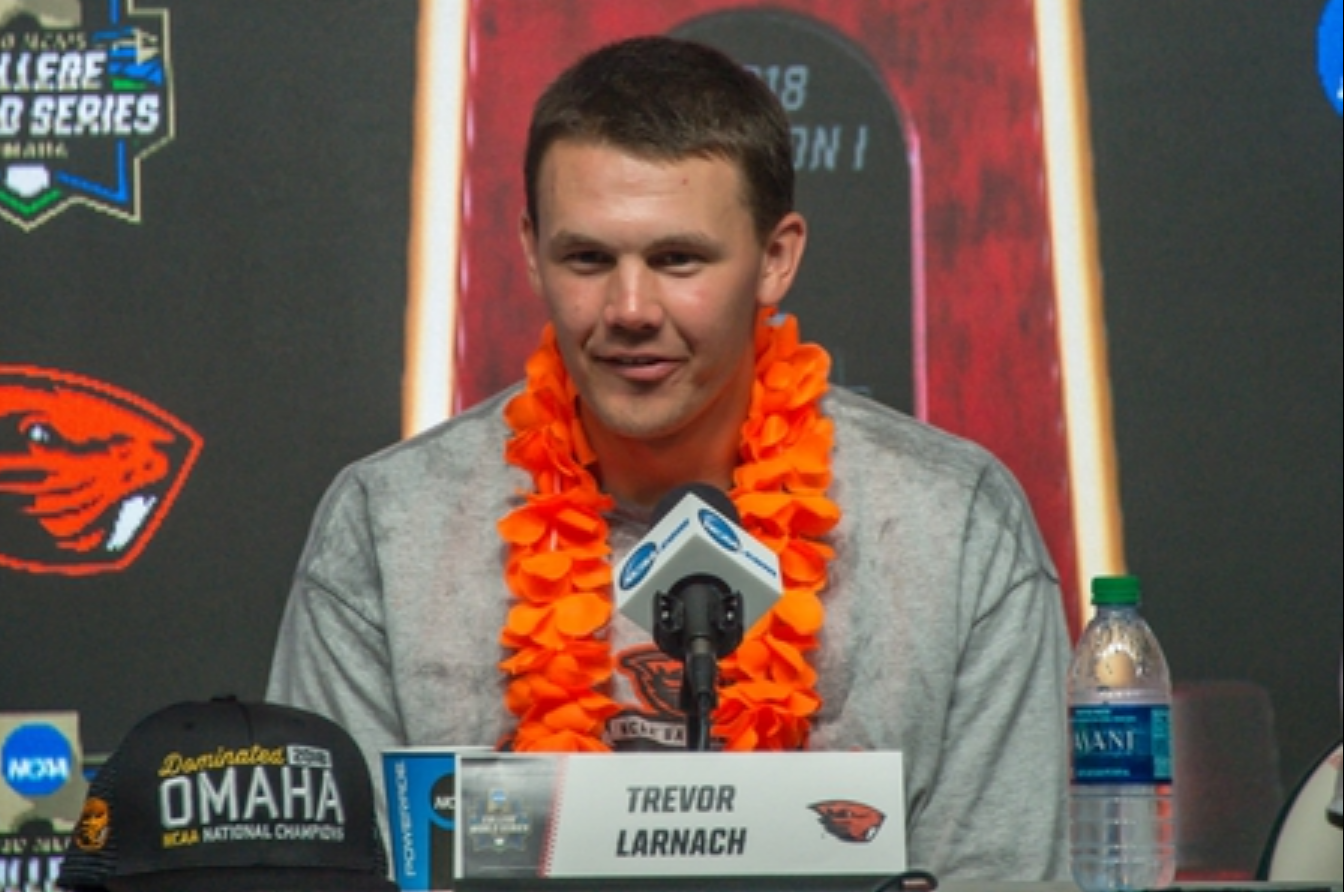
Gleeman: I couldn’t let you leave without asking about Joe Mauer. Obviously, the ball is not completely in the team’s court, in that he may decide to retire or may decide not to. From your perspective, if he continues playing similarly and stays healthy for the rest of the season, then at the end of the season, says, “I’m interested in playing again next year,” what is the team’s response to that? What is the team’s view of that going to be? Do you still view him as a plus, as an everyday first baseman?
Levine: One thing I’d learned early about public speaking is that sometimes, you say, “Gosh, that’s an excellent question. Who’s next?”
Gleeman: You did this once last year. [Audience laughs.]
Levine: Was it about the same topic?
Gleeman: It might’ve been.
Levine: Our feeling is that Joe is an exceptional person. What you perceive this guy to be, he’s that and then some. I’ll give you an example. Last night, he achieved something exceptional; he becomes number two on the hit list for the Twins, passing one of the best hitters of all time, Rod Carew. Kirby Puckett is the only guy ahead of him, so you’re talking about a sandwich between two Hall of Famers. After the game, when we win games, Joe gives out the game ball to who he deems to be the guy who impacted the game the most. One of his greatest gifts is that he typically gives it to the guy who didn’t hit the three-run homer, but to the guy who pitched the fifth and sixth inning because the starter got a blister, and without that guy we don’t get the chance to hit that three-run homer late. The essence of what he’s doing is making the 25th man feel like they’re one of the most important guys on the team. It’s an amazing art form that he has; I don’t know if he’s doing it purposely, but that’s the outcome.
So last night, we don’t win, but it’s a monumental game. Paul Molitor delivers an excellent speech, acknowledging the feat that Joe had achieved, and Joe stands up in front of the room and says, “I really appreciate it, fellas. I couldn’t have done it without you guys. Let’s go and win a game tomorrow.” It’s like, this guy wants nothing about the spotlight to be anywhere near him. How does that relate to the question Aaron asked? Almost not at all. [Audience laughs.] No, here’s how I’m going to weave that into the question. He has not had one conversation with us about his plans for after the season, nor has his agent. Any conversation he’s had with us is exactly what you guys have read in the paper, which is that we’ve got a job at hand, to win as many games as we can.
This is a decision he’s going to make at the end of the season with his wife. He has been consistent with that, with us, and we have not pushed him in any way, shape, or form. His agent, who is one of the most esteemed agents in the business, Ron Shapiro, has represented some of the best players in the game. He visited us for two hours in spring training and didn’t bring up anything. I think everyone is 100 percent supportive of Joe’s privacy in this matter. If he came to us with the question you posed, which was, “hey, I’d like to play another season, what does that look like?” I think we’re rolling up our sleeves and having a conversation with him, but I think we’re respectful of him, as to where he is in his life and the decisions he and his wife want to make. So those conversations, I think we anticipate having at season’s end, but kind of on Joe’s terms.
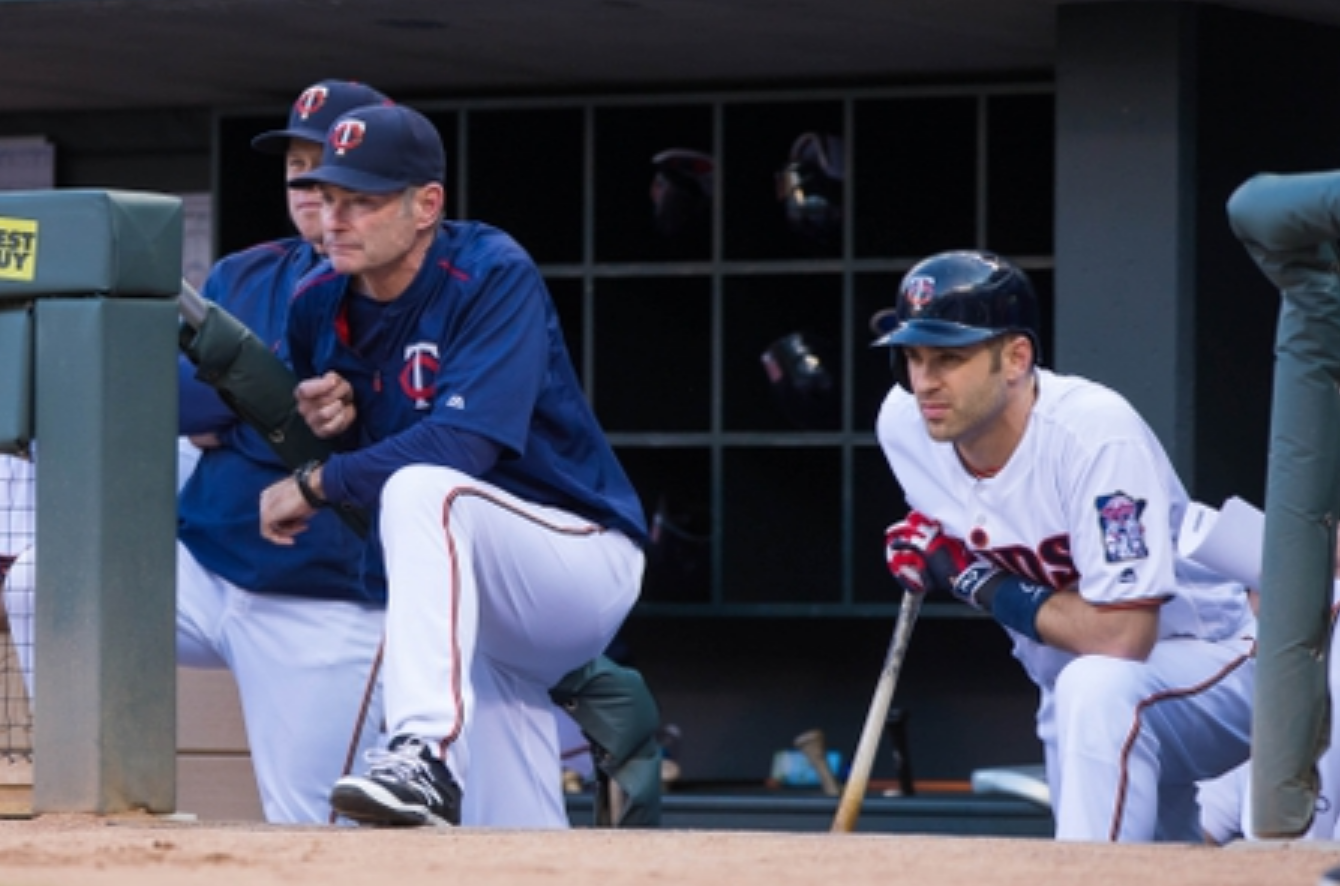
Gleeman: Another question that you’ll likely not want to answer. How was your evaluation of Paul Molitor changed, if at all, from this year to last year? Are there any adjustments he’s made, whether at your request, or just on his own? Obviously, the second-half run last year, won him Manager of the Year; this year hasn’t gone as well. Has your evaluation of him changed, not just in terms of him as an overall manager, but the day-to-day decision-making?
Levine: This information is slightly dated. I want to say, through 110 games, 2018 compared to 2017, we’d scored the exact same number of runs, and we’d given up 50 fewer runs. We were far worse, in terms of winning percentage, than we had been to the year before. The only reason I bring that up is to say that as crazy as everything I said at the beginning of this conversation about Buxton, Sano, and Dozier not realizing their potential, along with Santana, Jason Castro, and Polanco not getting a chance to contribute as much as they’d like—Paul, the coaching staff, and the players had gotten to a point in this season, whereby which without squinting too hard, you could say we’d actually improved off of the team from the previous year. I would list that as a pretty surprising comment to make; I don’t think any of us would look at it and say it felt like we were better than last year, but in practice, we were.
Obviously, runs scored vs. runs prevented is a very high correlation to winning percentage, but hasn’t played out quite as favorably for us this year as it had last year, in part due to something Aaron said at the outset of this conversation, which was this—when you have two Wild Card teams that are tracking close to 95 wins, that’s very different from where it was last year, where almost for the first time in the history of the game, if you won 81 games and lost 81 games, you were going to make the playoffs. In that regard, I think you can say our coaching staff and our players have performed pretty well this year, considering the adversity that was not contemplated, that this team has faced. The other element I’d say about the coaching staff, Paul specifically and the staff in general, is that the amount of information we’ve asked them to incorporate into their pre-game strategy, in-game strategy, and post-game moratoriums, is so vastly different this year than last, and certainly different than two years ago.
Paul is an exceptionally intelligent man. He’s real-world intelligent and baseball intelligent. His ability to assimilate a lot of that information into decision-making, which is very different from the way he was making decisions two years ago. I think he deserves a ton of credit for growing and developing along with us, as we’re trying to cut our teeth into these roles and provide him with a lot of information. On those two different types of lenses to look at performance at the coaching staff level, I think this season has been better than we’d maybe superficially expect, based upon how the team’s tracking right now.
***
The above transcript represents about half of Levine’s appearance. Audio of the entire thing is available below:
Our eternal gratitude to Amanda Anderle for transcribing all of the Levine audio.
Thank you for reading
This is a free article. If you enjoyed it, consider subscribing to Baseball Prospectus. Subscriptions support ongoing public baseball research and analysis in an increasingly proprietary environment.
Subscribe now